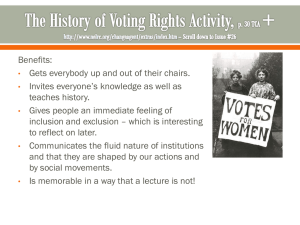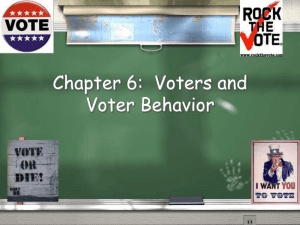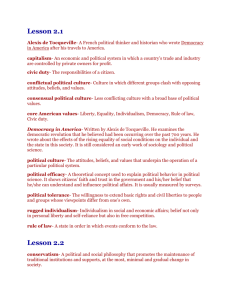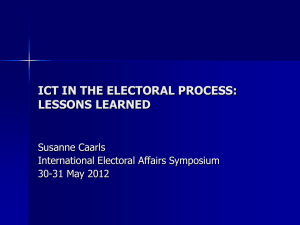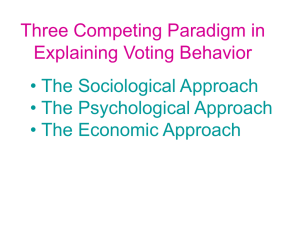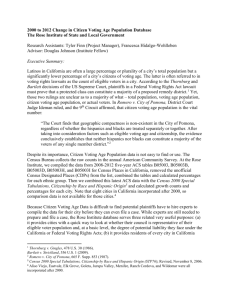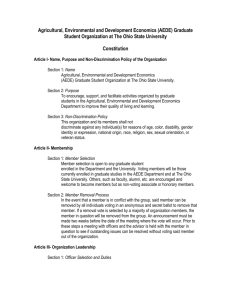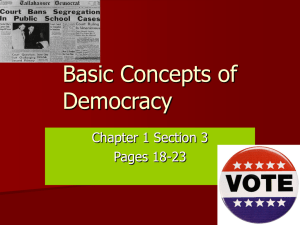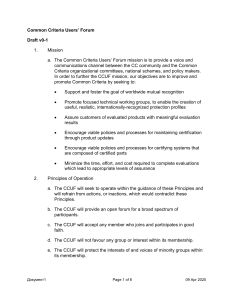PowerPoint Presentation - American Bar Association
advertisement
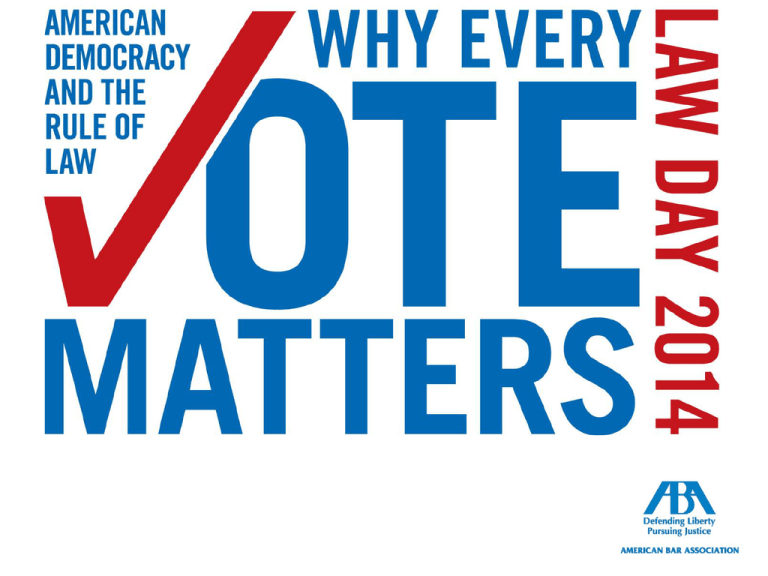
Excerpts from the Voting Rights Act of 1965 An act To enforce the fifteenth amendment to the Constitution of the United States, and for other purposes. SEC. 2. No voting qualification or prerequisite to voting, or standard, practice, or procedure shall be imposed or applied by any State or political subdivision to deny or abridge the right of any citizen of the United States to vote on account of race or color. SEC. 4. (a) To assure that the right of citizens of the United States to vote is not denied or abridged on account of race or color, no citizen shall be denied the right to vote in any Federal, State, or local election because of his failure to comply with any test or device in any State… SEC. 4. (c) The phrase “test or device” shall mean any requirement that a person as a prerequisite for voting or registration for voting (1) demonstrate the ability to read, write, understand, or interpret any matter, (2) demonstrate any educational achievement or his knowledge of any particular subject, (3) possess good moral character, or (4) prove his qualifications by the voucher of registered voters or members of any other class. Historical Significance of The Voting Rights Act of 1965 The Fifteenth Amendment guaranteed African-American men the right to vote in 1870 stating, "right of citizens of the United States to vote shall not be denied or abridged by the United States or by any state on account of race, color, or previous condition of servitude." However half a century later registration forms and literacy tests like this one were created to prevent groups of people, specifically AfricanAmericans from voting. Supporters and creators of such policies defended these actions by citing that Article 1, Section 2, of the Constitution gave the States power to determine qualifications for voting. These kinds of voter prerequisites became unconstitutional under the Voting Rights Act of 1965 and were considered barriers used to prevent eligible people from voting. Scenario: State Voter ID Laws and Young Voters College campuses are filled with students who have come from many regions across the country and many of them are voting for the first time. Some states have created new voter ID laws that do not include student IDs as an acceptable form of identification. Out of state drivers licenses are also unacceptable forms of voter identification. In-state drivers’ licenses are accepted. Students can obtain a free state-issued ID from the Department of Motor Vehicle after showing four other forms of identification. One of those IDs must be a student’s original Social Security card or a tax form with your name and Social Security number. Other forms of identification can include an original birth certificate, not a copy, a marriage license, a divorce paper, tax records and work receipts. In addition pre-registration for high school 16 and 17 year olds has also been eliminated with the reasoning that it created additional work to re-certify these students as voters when they turn 18. Day-of-voting registration has also been eliminated










